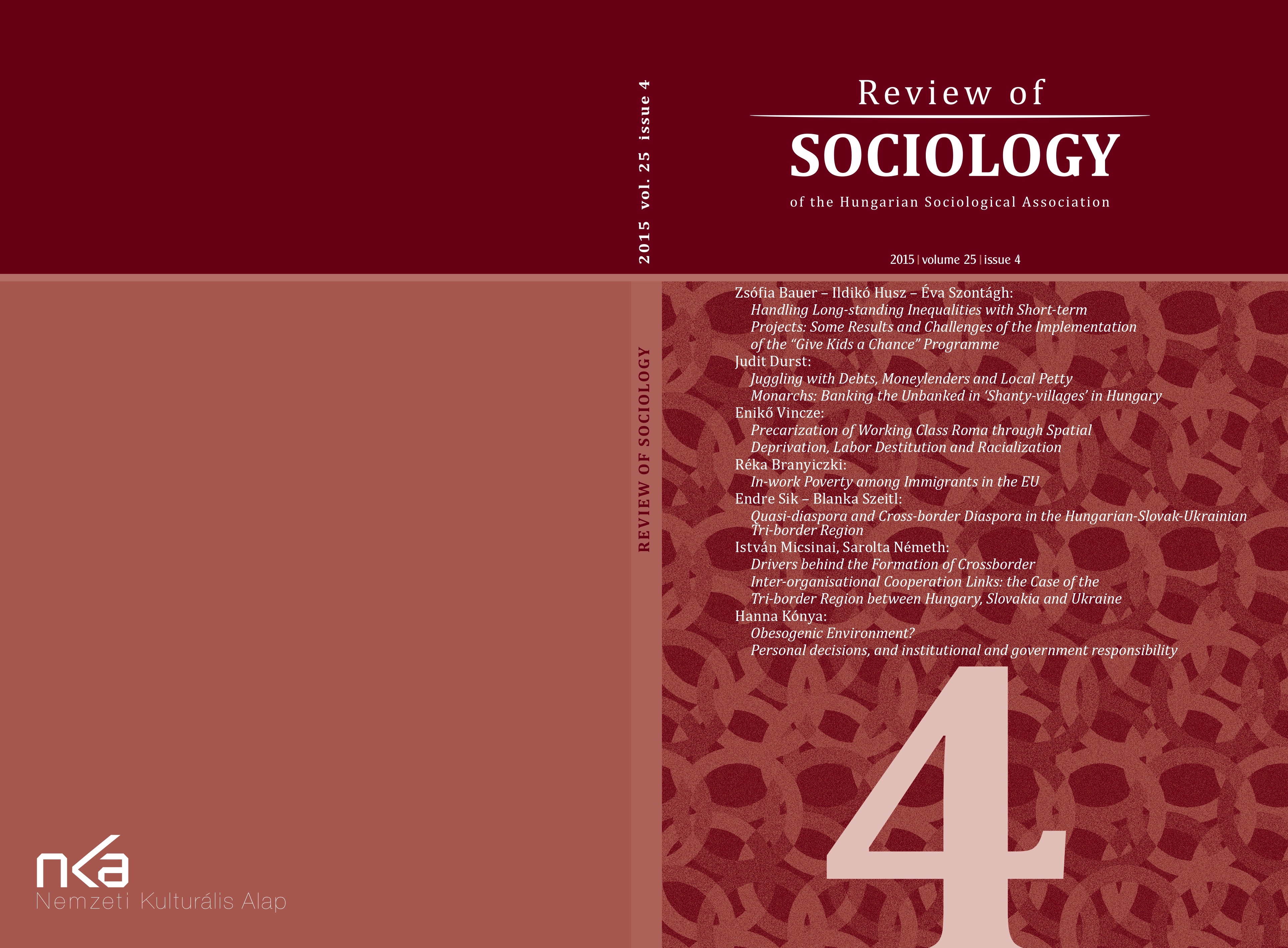Quasi-diaspora and Cross-border Diaspora in the Hungarian-Slovak-Ukrainian Tri-border Region
Absztrakt
In this paper we analyze the effects of quasi- and cross-border diasporas on migration processes in the Hungarian-Slovak-Ukrainian tri-border region. First we introduce the basic concepts (diaspora, quasi-diaspora and cross-border diaspora), then summarize the features of the tri-border region. The core of the analysis is the tri-border region but we use alternative perspectives (such as other cross-border regions, non-diaspora national minorities along the Eastern border of the EU, etc.) to put our findings into context. In the following chapters we illustrate the proxy characteristics of the tri-border population that define the quasi or cross-border diaspora, and we show how these social phenomena are related to migration processes. We found that in the tri-border region, as a consequence of its particular historical and political embeddedness, quasi-diasporic and regional identities strongly influence the mental map and the migration skills of its inhabitants. Under these conditions borders play an important role in all social processes. However, in case of migration it is also important whether the borders are easy or difficult to cross, what opportunities they offer for arbitrage, how expensive they make mobility, and last but not least to what extent the quasi-diasporic identity and networks play a role to maximize profits and minimize risks in income-earning activities.





